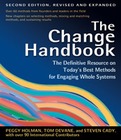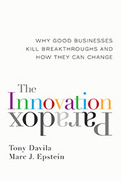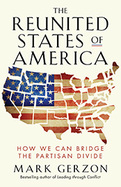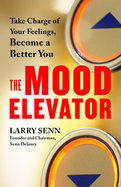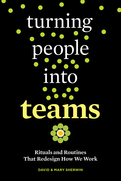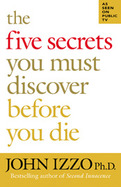Search Results: "building resilience"
Results 439-444 of 459
The Change Handbook
2007
The Change Handbook features chapters by the originators and foremost practitioners of such high-leverage change methods as Future Search, Real Time Strategic Change, Gemba Kaizen, and Open Space Technology. The authors outline distinctive aspects of their approach; detail roles and responsibilities; share a story illustrating usage; and answer frequently asked questions about how to put it into practice. Examples of successful change efforts acquaint readers with the diverse array of methods being employed today. A one-stop comparative chart allows them to evaluate the methods to determine what will work best fro them, and an in-depth reference section helps them locate the resources they need to get started.
- Features descriptions of sixty-one change methods--up from eighteen in the first edition--and new chapters on selecting a method, mixing and matching methods, and sustaining results
- Describes every change method's essential concepts and processes and provides advice on when to use each
- Including ninety contributors, with many of the originators of the change methods described
For more than twenty years, major innovations—the kind that transform industries and even societies—seem to have come almost exclusively from startups. Established companies still dominate most markets, but despite massive efforts and millions of dollars, they can't seem to achieve the same kinds of foundational breakthroughs.
The problem, say Tony Davila and Marc Epstein, is that the very processes and structures responsible for established companies' enduring success prevent them from developing breakthroughs. This is the innovation paradox.
Most established companies succeed through incremental innovation—taking a product they're known for and adding a feature here, cutting a cost there. It's a solid recipe for growth, but major breakthroughs are hard to achieve when everything about the way your organization is built and run is designed to reward making what already works work a little better. But incremental innovation can coexist with breakthrough thinking.
Using examples from both scrappy startups and long-term innovators such as IBM, 3M, Apple, and Google, Davila and Epstein explain how corporate culture, leadership style, strategy, incentives, and management systems can be structured to encourage breakthroughs. Then they bring it all together in a new model called the Startup Corporation, which combines the philosophy of the startup with the experience, resources, and network of an established company. Startup corporations encourage visionary thinking at all levels—instead of depending on a single Steve Jobs, they have dozens, even thousands of them.
Breakthrough innovation no longer has to be the nearly exclusive province of the new kids on the block. With Davila and Epstein's assistance, any company can develop paradigm-shifting products and services and maximize the ROI on its R&D.
The problem, say Tony Davila and Marc Epstein, is that the very processes and structures responsible for established companies' enduring success prevent them from developing breakthroughs. This is the innovation paradox.
Most established companies succeed through incremental innovation—taking a product they're known for and adding a feature here, cutting a cost there. It's a solid recipe for growth, but major breakthroughs are hard to achieve when everything about the way your organization is built and run is designed to reward making what already works work a little better. But incremental innovation can coexist with breakthrough thinking.
Using examples from both scrappy startups and long-term innovators such as IBM, 3M, Apple, and Google, Davila and Epstein explain how corporate culture, leadership style, strategy, incentives, and management systems can be structured to encourage breakthroughs. Then they bring it all together in a new model called the Startup Corporation, which combines the philosophy of the startup with the experience, resources, and network of an established company. Startup corporations encourage visionary thinking at all levels—instead of depending on a single Steve Jobs, they have dozens, even thousands of them.
Breakthrough innovation no longer has to be the nearly exclusive province of the new kids on the block. With Davila and Epstein's assistance, any company can develop paradigm-shifting products and services and maximize the ROI on its R&D.
Out of Many, One
In this era of poisonous partisanship, The Reunited States of America is a lifesaving antidote. At a time when loyalty to party seems to be overpowering love of country, it not only explains how we can bridge the partisan divide but also tells the untold story of how our fellow citizens already are doing it.
This book, a manifesto for a movement to reunite America, will help us put a stop to the seemingly endless Left-Right fistfight while honoring the vital role of healthy political debate. Mark Gerzon describes how citizens all over the country—Republicans, Democrats, and independents—are finding common ground on some of the most divisive and difficult issues we face today.
In this era of poisonous partisanship, The Reunited States of America is a lifesaving antidote. At a time when loyalty to party seems to be overpowering love of country, it not only explains how we can bridge the partisan divide but also tells the untold story of how our fellow citizens already are doing it.
This book, a manifesto for a movement to reunite America, will help us put a stop to the seemingly endless Left-Right fistfight while honoring the vital role of healthy political debate. Mark Gerzon describes how citizens all over the country—Republicans, Democrats, and independents—are finding common ground on some of the most divisive and difficult issues we face today.
The Mood Elevator
2017
Enjoy the Ride!
We all ride the Mood Elevator up and down every day. How well we do it impacts our relationships, our personal effectiveness, our career, and our experience of life. Most people take that ride for granted—but what if we knew the right buttons to push to move to the top?
In this very practical guide, Larry Senn provides an operating manual to keep you out of the emotional basement. He shows how to interrupt negative thought patterns that keep you stuck on a lower floor—depressed, stressed, anxious, judgmental—and move higher by cultivating mental attitudes like curiosity and gratitude. Through Senn's decades of work as a consultant, the Mood Elevator has been enthusiastically embraced by hundreds of thousands of people around the world. By sharing his work with a wider audience, Senn hopes to help all of us live life at our best.
We all ride the Mood Elevator up and down every day. How well we do it impacts our relationships, our personal effectiveness, our career, and our experience of life. Most people take that ride for granted—but what if we knew the right buttons to push to move to the top?
In this very practical guide, Larry Senn provides an operating manual to keep you out of the emotional basement. He shows how to interrupt negative thought patterns that keep you stuck on a lower floor—depressed, stressed, anxious, judgmental—and move higher by cultivating mental attitudes like curiosity and gratitude. Through Senn's decades of work as a consultant, the Mood Elevator has been enthusiastically embraced by hundreds of thousands of people around the world. By sharing his work with a wider audience, Senn hopes to help all of us live life at our best.
"Project and team leaders, do yourself a favor and make this book required reading by each member of your team!" —HR Professionals Magazine
Collaborative strategies work when they're designed by teams—where each person is heard, valued, and held accountable. This book is a practical guide for project team leaders and individual contributors who want their teams to play by a better set of rules.
Today's teams want more alignment among their members, better decision-making processes, and a greater sense of ownership over their work. This can be easy, even fun, if you have the right rituals.
Rituals are group activities during which people go through a series of behaviors in a specific order. They give teams the ability to create a collective point of view and reshape the processes that affect their day-to-day work. In Turning People into Teams, you'll find dozens of practical rituals for finding a common purpose at the beginning of a project, getting unstuck when you hit bottlenecks or brick walls, and wrapping things up at the end and moving on to new teams.
Customizable for any industry, work situation, or organizational philosophy, these rituals have been used internationally by many for-profit and not-for-profit organizations. By implementing just a few of these rituals, a team can capture the strengths of each individual for incredible results, making choices together that matter.
Collaborative strategies work when they're designed by teams—where each person is heard, valued, and held accountable. This book is a practical guide for project team leaders and individual contributors who want their teams to play by a better set of rules.
Today's teams want more alignment among their members, better decision-making processes, and a greater sense of ownership over their work. This can be easy, even fun, if you have the right rituals.
Rituals are group activities during which people go through a series of behaviors in a specific order. They give teams the ability to create a collective point of view and reshape the processes that affect their day-to-day work. In Turning People into Teams, you'll find dozens of practical rituals for finding a common purpose at the beginning of a project, getting unstuck when you hit bottlenecks or brick walls, and wrapping things up at the end and moving on to new teams.
Customizable for any industry, work situation, or organizational philosophy, these rituals have been used internationally by many for-profit and not-for-profit organizations. By implementing just a few of these rituals, a team can capture the strengths of each individual for incredible results, making choices together that matter.
“What brought you the greatest joy? What do you wish you had learned sooner? What ultimately mattered and what didn't?” asks Dr. John Izzo. Based on a highly acclaimed public television series, this book takes the reader on a heartwarming and profound journey to find lasting happiness.
Imagine for a moment that you are about to take a foreign vacation to an exotic destination. You have saved your entire life to travel there. It is a destination with almost unlimited choices of how to spend your time and you know you will not have enough time to explore every opportunity. You are fairly certain that you will never get to take a second trip to this destination; this will be your one opportunity.
Now imagine that someone informs you that there are several people in your neighborhood who have been to that country, explored every corner. Some of them enjoyed the journey and have few regrets, but others wish they could take the trip again knowing what they know now. Would you not invite them over for dinner, ask them to bring their photographs, listen to their stories, and hear their advice?
This is precisely the journey explored in this book. Dr. John Izzo and his colleagues interviewed over 200 people, ages 60-106, who were identified by friends and acquaintances as “the one person they knew who had found happiness and meaning.” From town barbers to Holocaust survivors, from aboriginal chiefs to CEOs, these people had over 18,000 years of life experience between them. He asked them questions like, “What brought you the greatest joy? What do you wish you had learned sooner? What ultimately mattered and what didn't?”
Here Izzo shares their stories—funny, moving, and thought-provoking—and the Five Secrets he learned from listening to them. This book will make you laugh, bring you to tears, and inspire you to discover what matters long before you die.
Imagine for a moment that you are about to take a foreign vacation to an exotic destination. You have saved your entire life to travel there. It is a destination with almost unlimited choices of how to spend your time and you know you will not have enough time to explore every opportunity. You are fairly certain that you will never get to take a second trip to this destination; this will be your one opportunity.
Now imagine that someone informs you that there are several people in your neighborhood who have been to that country, explored every corner. Some of them enjoyed the journey and have few regrets, but others wish they could take the trip again knowing what they know now. Would you not invite them over for dinner, ask them to bring their photographs, listen to their stories, and hear their advice?
This is precisely the journey explored in this book. Dr. John Izzo and his colleagues interviewed over 200 people, ages 60-106, who were identified by friends and acquaintances as “the one person they knew who had found happiness and meaning.” From town barbers to Holocaust survivors, from aboriginal chiefs to CEOs, these people had over 18,000 years of life experience between them. He asked them questions like, “What brought you the greatest joy? What do you wish you had learned sooner? What ultimately mattered and what didn't?”
Here Izzo shares their stories—funny, moving, and thought-provoking—and the Five Secrets he learned from listening to them. This book will make you laugh, bring you to tears, and inspire you to discover what matters long before you die.


